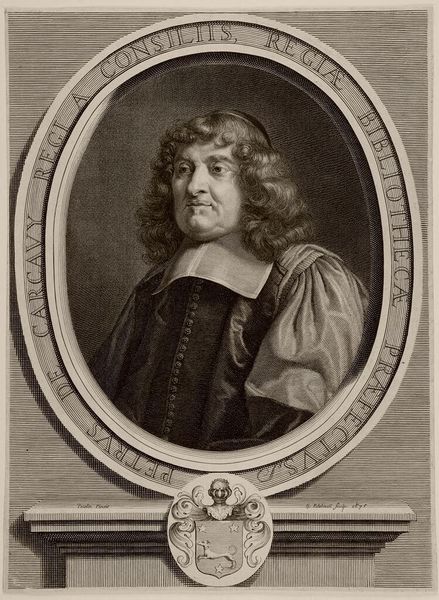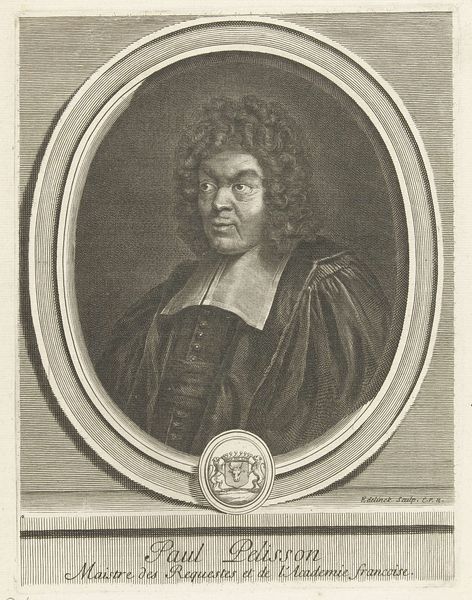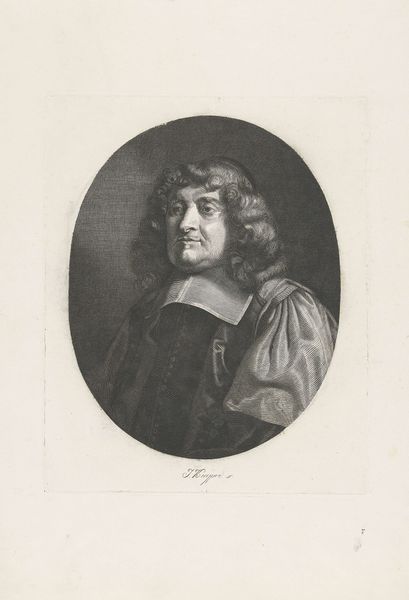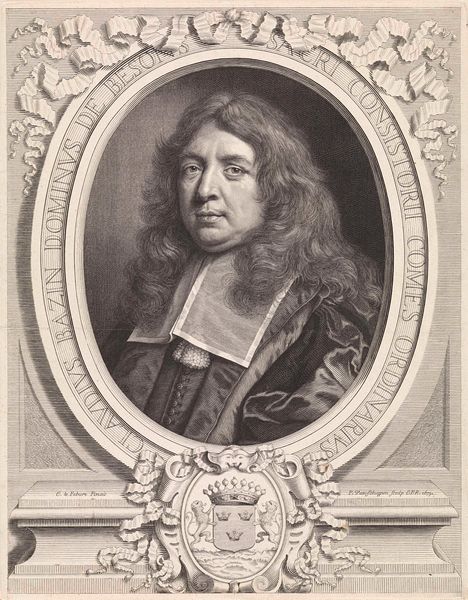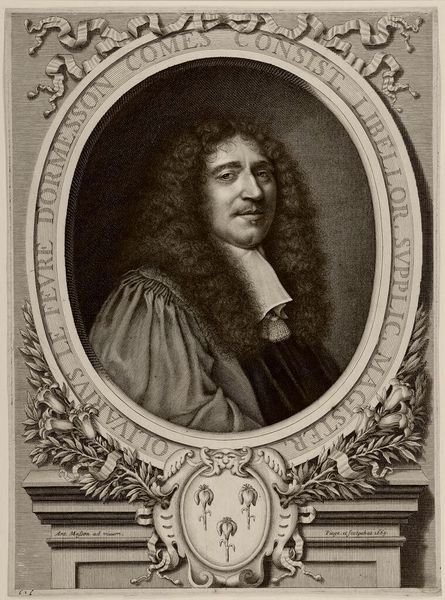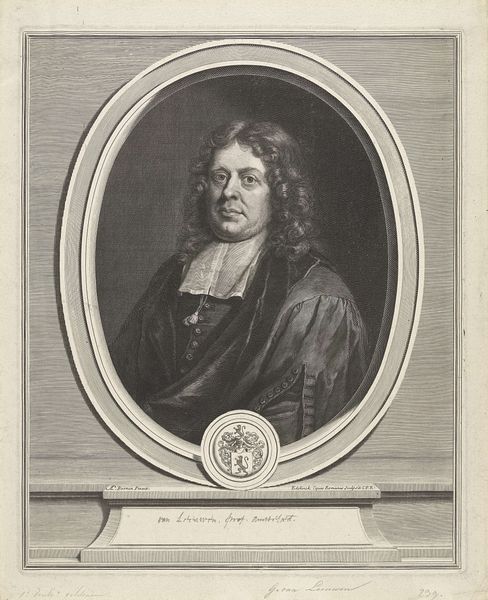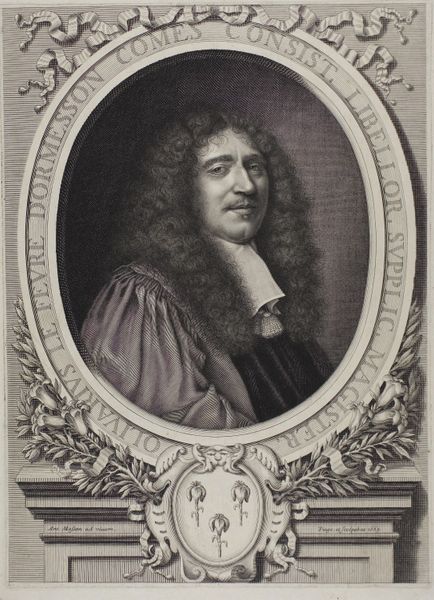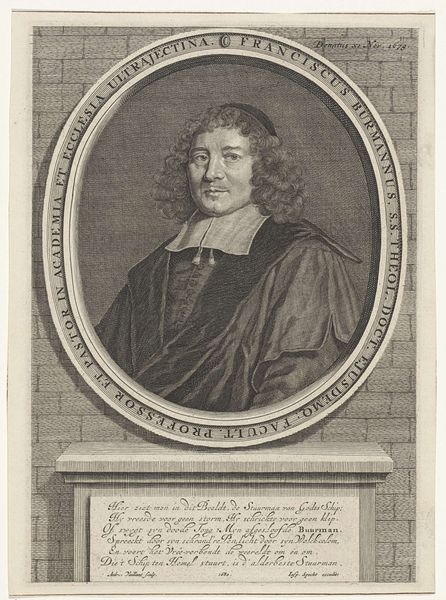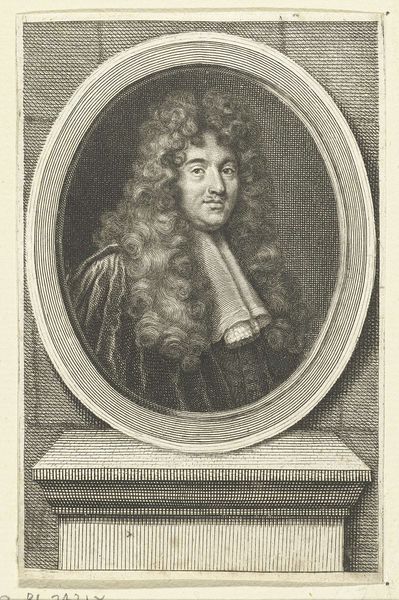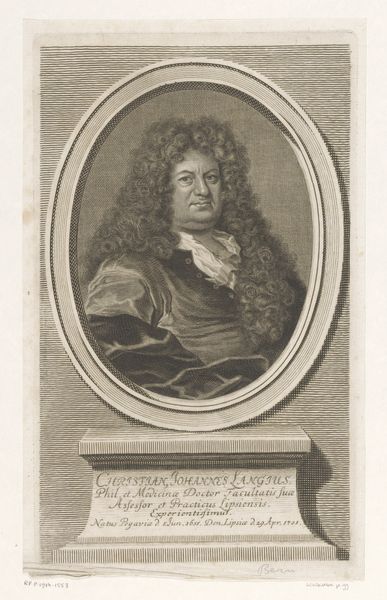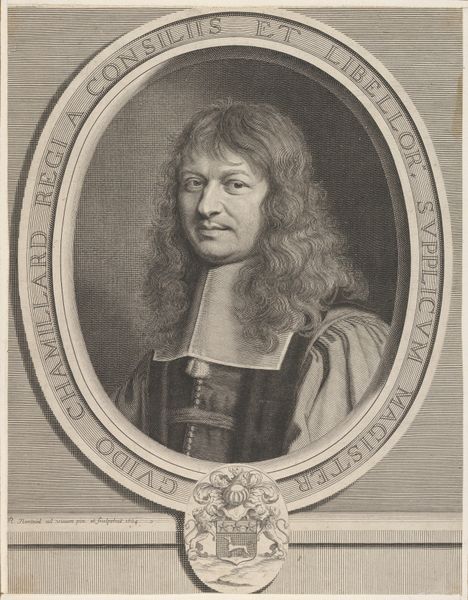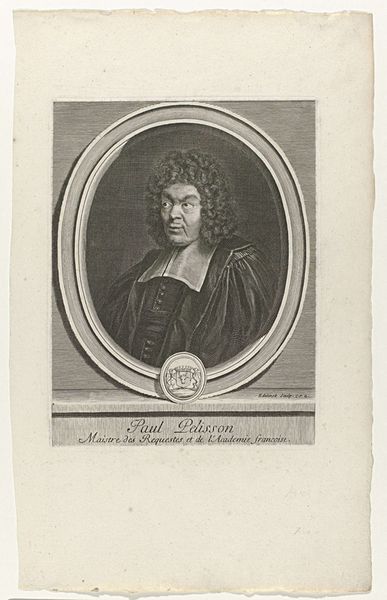
engraving
#
portrait
#
baroque
#
old engraving style
#
figuration
#
historical photography
#
line
#
engraving
Dimensions: height 348 mm, width 253 mm
Copyright: Rijks Museum: Open Domain
Curator: Let’s consider this engraving of Pierre de Carcavy, completed in 1675 by Gérard Edelinck. It's currently housed here at the Rijksmuseum. Editor: My first impression is how much texture Edelinck achieves through these intricate lines, giving a tactile sense to Carcavy’s garments and even his hair. Curator: Indeed, Edelinck was known for his skill at translating paintings into print, which demanded immense technical prowess. Carcavy, for his part, was a prominent figure; he served as the Royal Librarian under Louis XIV. This portrait serves as both a representation of an individual and of the intellectual culture of the French court. Editor: Look at the meticulous detail in the coat-of-arms below the portrait. The layering of lines to create shadows and depth is truly masterful. This speaks to the craft of engraving, and the time and labor involved in creating even what we might consider a “simple” portrait. Were these engravings widely distributed? Curator: They certainly circulated, serving to disseminate the image of important individuals within the Republic of Letters. Think of this as a form of early social networking. But the politics of image is also critical here. Consider the way Carcavy is presented – not as a revolutionary thinker, but as a man of refinement, a pillar of the establishment. Editor: Right. It's interesting how a technique like engraving, seemingly removed from direct manipulation, could still convey status and power. The medium reinforces the message of authority, I suppose. There's almost a coldness in that precision, compared to say, a painted portrait. Curator: That’s an astute point. The very act of reproduction is linked to larger networks of patronage, power and access to knowledge. Each print, a mirror reflecting the tastes and values of the era, reinforces Carcavy’s position. Editor: Seeing the image so precisely rendered truly brings into focus not just Carcavy’s likeness, but the skill of Edelinck himself as a master engraver and how he navigates those expectations. Curator: Absolutely, and considering how these images shaped perceptions and the distribution of influence helps us contextualize even a single portrait like this within the broader sweep of cultural history.
Comments
No comments
Be the first to comment and join the conversation on the ultimate creative platform.
